Posts categorized “Theory”.
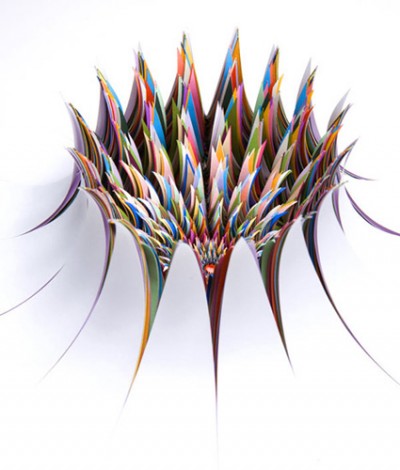
http://www.jenstark.com/sculpture_17.html
by Jen Stark
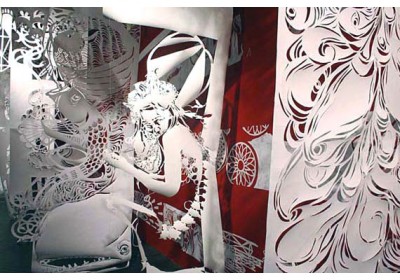
http://www.deitch.com/files/slideshows/swoon_work_5.jpg
by swoon
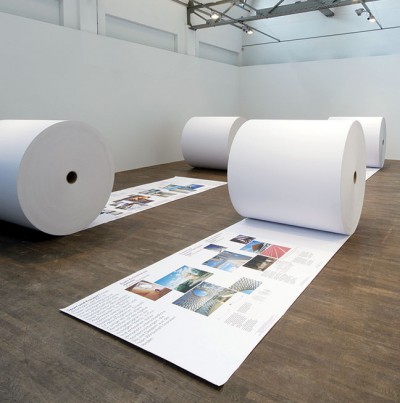
http://www.123buero.com/img/projects/PublicProjects/PublicProjects_06.jpg
by 123buero
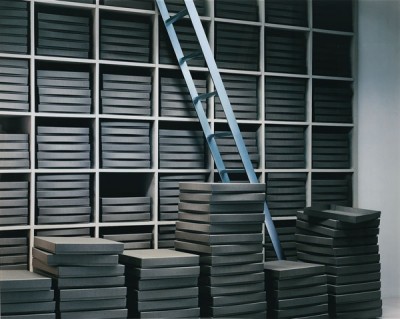
http://www.thomasdemand.de/
by Thomas Demand
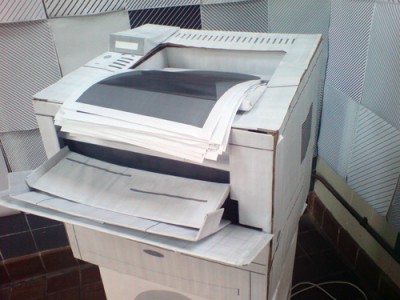
http://www.fredriksterner.com/Bildmaterial/odetolaserprinter/laser3.jpg
by Fredrik Sterner
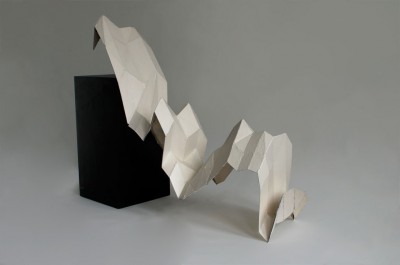
http://anfischer.com/wp-content/uploads/indizes/anfischer_indizes_1.jpg
by Andreas Fischer
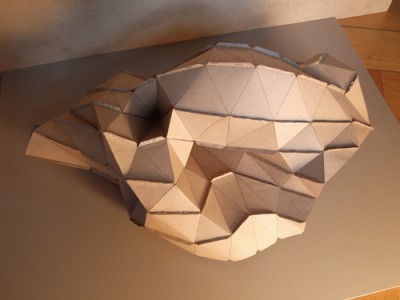
http://www.deffekt.ch/wordpress/wp-content/gallery/p8/p7181409.jpg
by Martin Fuchs / deffect
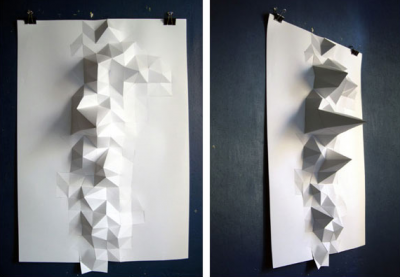
http://www.pierrevanni.com/portfolio.jpg
by Pierre Vanni
Paper sculpturing has become commonplace in contemporary visual culture. Paper is not only seen as planar two-dimensional canvas any more to write, print or draw on. It rather becomes an affordable and multi-functional material for uses such as building miniature models to sculpture surfaces and large scale objects. Artists using paper as their favorite medium come from very different fields. Swoon is part of an international street art scene but also gets featured in various galleries. On the street the decay of the material becomes part of the artwork what is not given in the gallery though. So location influences the aesthetics of her work.
In Thomas Demands photographic work, paper and location play a very different role. He uses paper to build exact models of locations that were specific happenings once took place. Lightning and perspective let the photographs look almost like reality.
The examples of Andreas Fischer and Martin Fuchs applied digital production methods and used data input to create specific shapes. Thus paper sculpture becomes a kind of physical representation of information graphs or mathematical calculation.
Robert Lang talks about Origami as art-form or form of sculpture which has been around for hundreds of years but totally changed it’s face once combined with mathematics. The mathematic rules of modern Origami however could be defined in simple four laws: The two colorability, at any interior vertex the ‘mountain-’ and ‘valley-folds’ always differ two, angles around a vertex sum up to a straight line and a sheet can never penetrate a fold (no self-intersection at overlaps).
These rules are as simple as an computer could understand them what makes Origami a mean of digital production, rapid prototyping and simulation not only in areas like science and technology.
To enable a kind of origami on demand Robert Lang developed ‘treemaker’ - a program to generate crease patterns after a given definition of a stick-figure-like version of one’s design. The basic principal of a crease pattern is to create as many flaps as needed for the final object so what ‘treemaker’ mainly does is to calculate and output the packing of circles on the sheet.
(www.ted.com/index.php/talks/robert_lang_folds_way_new_origami.html)
Posted on December 21st, 2008.
Categories: Favorites, Inspiration, Installation, Poster, Research, Theory.
...................................................................................................................................
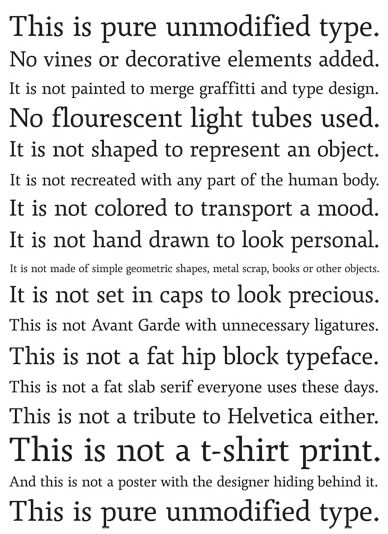
http://farm4.static.flickr.com/3212/2739457894_2b10257c23_o.jpg
above: ‘This is pure unmodified type. No vines or decorative elements added. It is not painted to merge graffiti and type design. No fluorescent light tubes used. It is not shaped to represent an object. It is not recreated with any part of the human body. It is not colored to transport a mood. It is not hand drawn to look personal. It is not made of simple geometric shapes, metal scrap, books or other objects. It is not set in caps to look precious. This is not Avant-Garde with unnecessary ligatures. This is not a fat, hip block typeface. This is not a tribute to Helvetica either. This is not a t-shirt print. And this is not a poster with the designer hiding behind it. This is pure unmodified type.’
Posted on December 13th, 2008.
Categories: Favorites, Inspiration, Research, Theory.
...................................................................................................................................
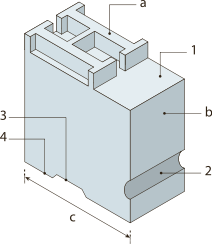
http://upload.wikimedia.org/wikipedia/commons/e/e9/Metal_type.svg
On the 21. of March the CCC published a conversation with Thomas Maier on the history of typography at a glance. Starting with the early evolving of script and the application of copper engraving Thomas Maier exemplifies the invention of book-printing and Gutenberg’s printing technique. Moreover he talks about technical specifications and about some related topics like copyright and standard paper formats. He later describes the transition from using Line-setting systems to the usage of punched tape, telegraphic systems and typewriters and further the offset print and Phototypesetting. Finally he comes to the chapter of digitalized fonts.
From 1900 on it was just when the variety of type-designs grew with the replacement of the lead and not before 1965 the script became digital while Photocomposition was the latest font-setting technique. Through photo-scans fonts could be fragmented into multiple points. One of the first systems for that was Rudolf Hell’s ‘Digiset’. In 1975 Fonts got described through digital data with the help of the Ikarus-system. Originally this system was used to cut letters with a cutting machine to achieve stencil-like films for Phototypesetting.
Here letters could be described through Bezier curves by defining the position and kind of each point on the letter-shape and this input data was then stored on punched tape. This technique enabled the calculation of bitmaps from vector images which could be directly applied to the Photocomposition. From this approach later in the 80ies PostScript evolved.
Nevertheless Thomas Maier sees the decisive turning point for the development towards digital font in automated punch-cutting via a pantograph during the industrial revolution. For the first time script was seen as being specified by its contour. Before that a letter was ‘a plane thing’, with punch-cutting the translation of the line that was to mill defined the shape. This view was required to invent Linotype and the digitalizing for the Ikarus system.
In the 80ies a combination of corporate activities result in the development of a series of font formats. Apple introduces the personal computer, Adobe implements the programming language PostScript for the description of site contents such as format, graphics and font. Later Adobe releases PDF, Aldus designs Pagemaker and with its release establish Desktop Publishing. Eventually Linotype supplies a driver for PostScript.
Because of Licensing Apple develops a own font format which technically and mathematically was akin PostScript and that lead to the release of the TrueType format Type 1. Then some more TrueType formats and Opentype were to follow before PostScript finally became open source.
Opentype is unique as it has a two-way method to treat script. For the first time character and glyph, i.e. meaning and form, were seen as independent. This made a range of micro-typographic issues such as ligatures possible.
Posted on December 11th, 2008.
Categories: Research, Theory.
...................................................................................................................................
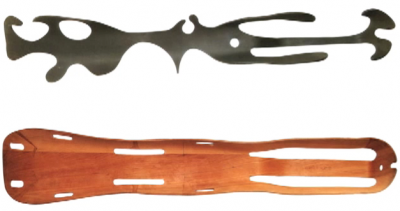
http://www.ted.com/index.php/talks/tim_brown_on_creativity_and_play.html
Last month TED posted a video of Tim Brown’s presentation on the link between creativity and play.
The approach he pictures seems very important to me and the problems he explains I experienced before. With my thesis project - as I intended to do a work that needs to include play as a decisive part of the process I put myself in a somehow vulnerable position because play and imperfectness tend to be seen as the contrary to profession. And in most schools, businesses and graphic design platforms profession gains the most respect…
Tim Brown says the reason because many adults can’t be playful easily is the fear of failure or bad critique. Compared to children grown-ups loose the freedom and trust in their environment and tend to conservative thinking. But designers need to play and therefore to take risks. So this makes it very important for them to act in an environment they can trust. Playfulness is important because it eases the process to come up with creative ideas, it opens opportunities and supports productivity. There are three main categories of play: exploration, construction play and role play.
Exploration is about quantity. A classic example is to look for as many usages for a paper-clip as possible. It is about forgetting the original goal but exploring what is interesting for one. But as this behavior is against adult habits we have to relearn openness and playfulness and it does not make sense to introduce rules to break the rules such as brainstorming guides. Experiments explore possibilities and also physical objects.
Construction- or building-play means thinking with ones hands and is very effective and useful for production stages like rapid prototyping. It helps to communicate about a specific product or such when you have a dummy to talk about even when its just taped together from random things from around the work-space. Here it becomes obvious that another obstacle for adults remaining playful is that all kind of ‘play-tools’ get lost in schools with each level of school.
Role acting is another way to experience your environment and one can simulate case studies or play through scenarios.
Adults are very reluctant to engage though. This is partly embarrassment again or they don’t believe that what emerges is necessarily valid. The social scripts kids follow in role plays show that it is worth taking serious and adults experienced many situations throughout their lives so that they have a huge set of role play scripts already internalized - so we are very good in acting out an solution. Another aspect is that it facilitates to imagine a specific surrounding one is designing for. Besides simulation you could do role play in the real world as well. By documenting an experience you are going through even unintended emphasis happens on specific aspects you might have not noticed before.
Eventually Tim Brown stresses a few points about play:
Play is not anarchy. (Play has rules, especially group play)
There are rules about when to play. (There should be transitions between experiences)
In design one goes through two distinctive modes of operation - the generative mode and the creative mode (exploring and creating)
You can be playful and professional/serious at once
Posted on December 9th, 2008.
Categories: Methodology, Research, Theory.
...................................................................................................................................
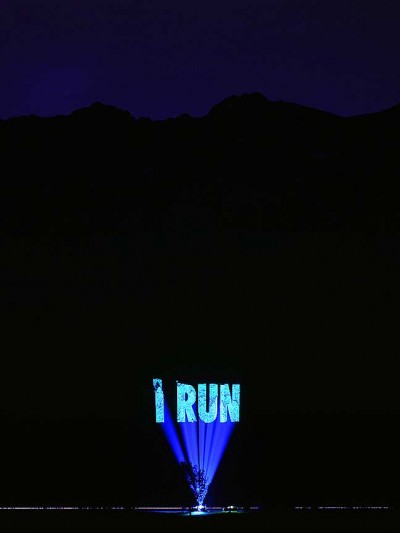
http://www.pbs.org/art21/slideshow/popup.php?slide=1475#
Jenny Holzer’s medium is writing. Wheather it is street posters, LED, projections or everyday objects like T-shirts or cups.
The artist’s writings are truisms, sayings, various statements appearing as poetry-like phrases. But Holzer clearly distinguishes her art from poetry or literature in general because ‘it has to do with the demands of the medium on which I place it.’ By applying media that is commonly used in advertising she found a way to communicate explicit statements about society in a minimalistic manner and to question how those media affect information.
With Xenon light she is also able to create large environmental projections on buildings or landscapes.
Until New Year 2009 the Guggenheim in New York as well features Jenny Holzer’s work on the outstanding facade of the museum.
www.guggenheim.org/new-york/exhibitions/on-view-now/for-the-guggenheim
An example of her usage of online media is ‘please change believes’ where you can edit and contribute truisms. adaweb.walkerart.org/project/holzer/cgi/pcb.cgi
Posted on December 3rd, 2008.
Categories: Installation, News, Research, Theory.
...................................................................................................................................
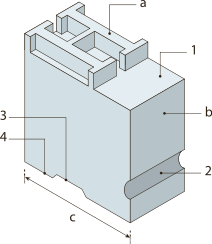
http://upload.wikimedia.org/wikipedia/commons/e/e9/Metal_type.svg
A widow’s a whore’s child…
I set up a basic English-German dictionary for technical terms around typography.
Listing on www.nohiddenmessage.com/index.php?/terms
Posted on November 3rd, 2008.
Categories: News, Research, Resources, Theory.
...................................................................................................................................
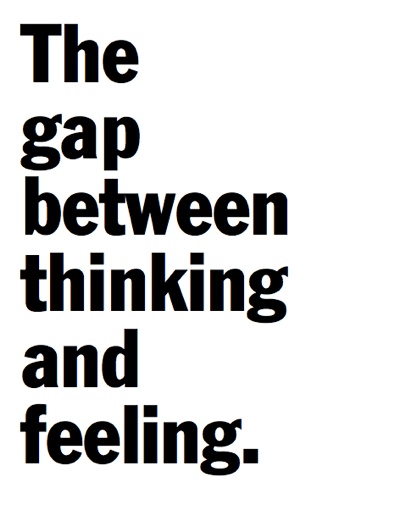
http://tex-server.org/text/wp-content/200707100007.jpg
Posted on September 28th, 2008.
Categories: Research, Theory.
...................................................................................................................................
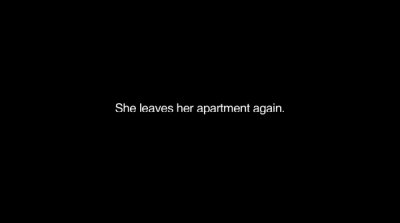
http://mikemillsweb.com/filmandvideo_br_silently.html
With ‘Blonde Redhead - Silently’ Mike Mills made a music video that creates images with just plain white text on a black ground describing scenes different to the lyrics of the song.
In 1959 McLuhan said “flickers, as the movies were once called, are really built into the printed form. The printed form is itself a flicker in which you are constantly transferring from this shot to that shot. This shot, the image lingers while you look at that one, and while you look at the next one, there’s a fingering, wavering, doubtful no-man’s land.” (Essential McLuhan, p.282)
Posted on September 25th, 2008.
Categories: Favorites, Inspiration, Research, Theory.
...................................................................................................................................
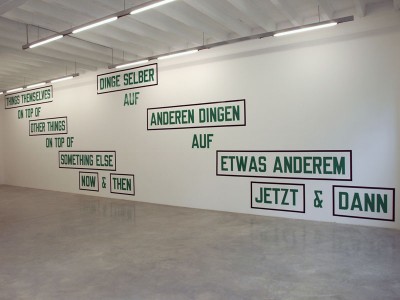
http://konradfischergalerie.de/media/20080827170856.jpg
This night Konrad Fischer Gallery was hosting a talk with Lawrence Weiner, one of the main actors in the field of Conceptual Art. His sculptures are mostly typographic texts as shown in his current exhibition.
Weiner was talking about art and society and their change in general, what art means or what art is not (something in secret for example is not art) what the artist does or wants (to put something in the world, make his art accessible and affect its environment - to not fuck up somebody’s day but somebody’s life, to not telling somebody something but show, …)
Here briefly what I extracted for myself of what he was talking about language as medium as well as his experience of working with type: (Partly in reference to his currently featured work)
Translation plays a significant role in his international exhibitions and he explains that one obstacle is that everything has a double meaning (e.g. end has several meanings and is therefore hard to use) and that sometimes it seems even harder to translate text than an image, but he wouldn’t want that just one language is spoken. (A question like “How do you handle something new?” for example almost couldn’t be translated into Arabic or Hebrew)
Language is just another tool - it’s his oil. He uses language also for the reasons that it is accessible and pragmatic. It says what it says.
Language is as sensual as touch. You don’t have language “inside you” - you don’t possess it like smell or touch. You rather have the object in you and as you start to name things you use language. (children speak in another language until they get forced to speak the commonly learned language) And to that level he brings his art - where you give things names.
The text is object.
Lawrence Weiner has no quotes in his work - he sometimes finds paraphrases appropriate but he clearly states that putting a phrase of Goethe on a wall doesn’t make an artist.
See it as a message in a bottle - it’s up to you what you do with the message and you can see the bottle as the society.
Besides words he also uses graphics or special characters such as parenthesis or brackets, they are also language and say things.
It always took some effort to find the right typeface after the last one got overused by communication design and he couldn’t manage to create an computable font himself.
Artist Series: Lawrence Weiner (Video by Hillman Curtis)
Posted on September 20th, 2008.
Categories: Installation, Research, Theory.
...................................................................................................................................















